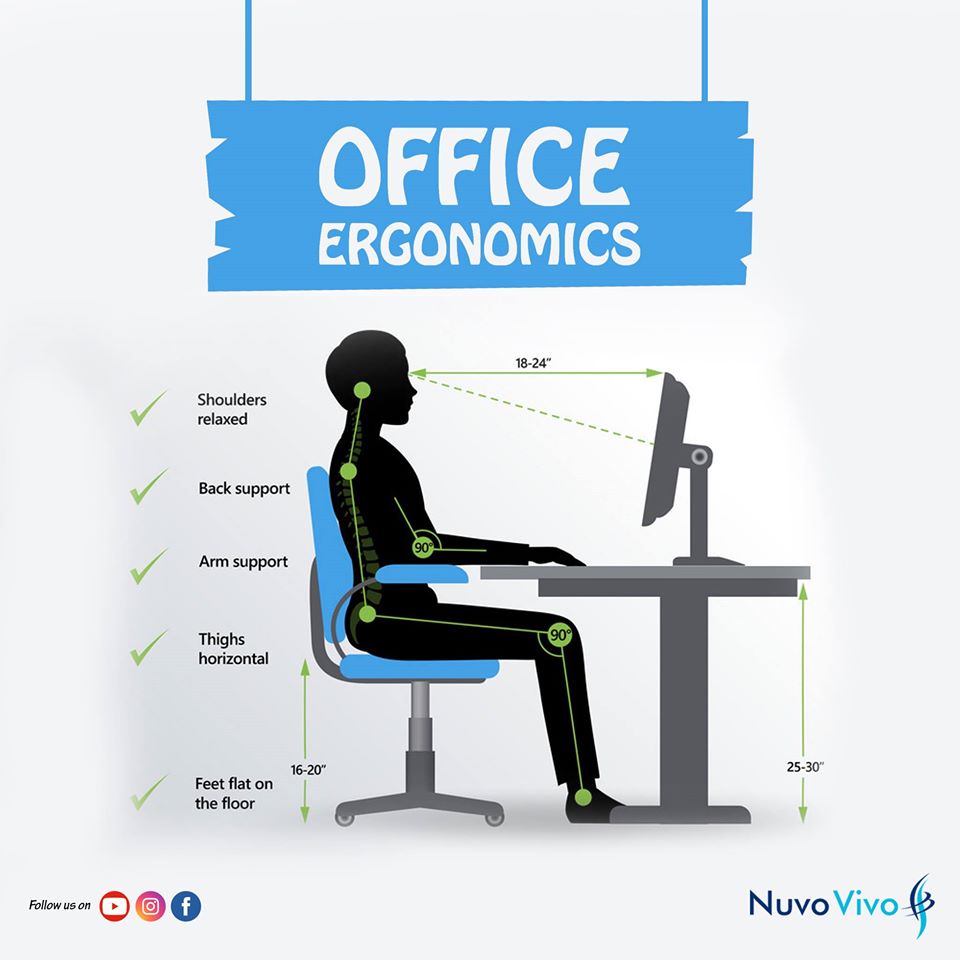Office Ergonomics is the science of designing the office work station, such that it is comfortable and allows for maximum productivity and efficiency.
1) Rest your arms on an arm-rest most of the times. Else, the neck and shoulder muscles will be strained
2) Watch your head position, and try to keep the weight of your head directly above its base of support (neck). Don’t “crane” your head and neck forward.
3) Do not slouch, as it puts more pressure on the vertebrae. Use the lumbar support of your chair (the lower side of the backrest). Avoid sitting in a way that places body weight more on one than on the other, also avoid leaning and reaching forward
4) The monitor should be placed directly in front of you, with the top no higher than eye level. The keyboard should be directly in front of the monitor so you don’t have to frequently turn your head and neck.
5) Talking on the phone with the phone receiver held between the neck and ear is really bad practice.
6) The keyboard and the mouse should be close enough to prevent excessive reaching which strains the shoulders and arms.
7) Avoid straining eyes by making sure that the monitor is not too close; it should be at least an arm’s length away.
8) You can rest your eyes periodically for several seconds by looking at objects at a distance to give your eyes a break.
9) The feet should not be dangling when you are seated. If your feet don’t comfortably reach the floor or there is pressure on the backs of your legs, use a footrest or lower the keyboard and chair. The feet should also be bend at nearly 90 degrees to be comfortable

